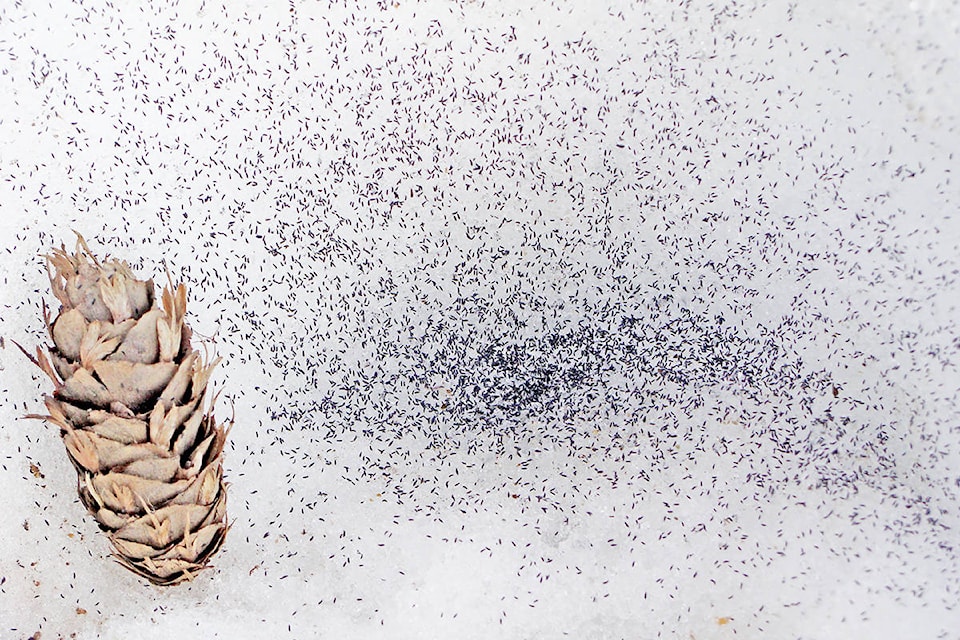I first noticed these tiny creatures a number of years ago after I took a closer look at what appeared to be tiny black specs on the pure white snow.
On the first warm spring day many appeared scattered evenly over the snow surface adjacent to forest areas. In some places where there was a depression (i.e. usually an old animal or human foot print) there were so many the snow was black.
After studying the dense populations for some time, a few suddenly appeared and disappeared. This quick movement was accomplished by jumping (springing) to another location. I scooped up a few so I could study them more closely and found they could crawl about on a smooth surface using their three pairs of short legs, none of which seemed capable of propelling the fleas any distance.
READ MORE: Restoring forestry in B.C.
After reviewing the literature it turns out that snow fleas are related to similar arthropods called spring tails (Collembola) which have a short forked tail folded underneath called a furcula. This spring-like structure when released launches the springtails several inches into the air.
If you Google “Springtails” you can see some excellent documentaries on these tiny creatures. By using high speed cameras the authors are able to show how the furcula is able to project the “springs” distances many times their length. Equally interesting are the videos of how they groom and display some very interesting mating behaviours.
Springtails (Springs for short) are detritivores, which means they obtain their nutrients by consuming detritus (decomposing plant/organic matter) including leaf and moss litter, yeasts, bacteria, fungi and pollen.
According to one source they do not directly engage in the decomposition of organic matter, but contribute to it indirectly through the fragmentation of organic matter and the control of soil microbial communities.
In sheer numbers, they are reputed to be one of the most abundant of all microscopic soil animals, with estimates of 100,000 individuals per square meter of ground.
Remarkably, snow fleas don’t freeze in the winter thanks to a special kind of protein in their bodies. This protein contains glycine, an amino acid, which helps bind to ice crystals and keep them from growing. It works much like the antifreeze we put in vehicles and RVs.
The antifreeze protein allows snow fleas to remain alive and active even in subzero temperatures with the snow cover also helping to protect them.
READ MORE: Soil cavities reveal extensive root systems of burned trees
Like so many of the small soil organisms the health of the plants and animals are very dependent on the work done by these seemingly inconsequential microorganisms. My limited observations seem to indicate that the springtails are more common on the shaded forest areas relative to the dryer forests which seems consistent with them favouring damp shaded areas where there is likely more leaf litter to work with.
If you would like a unique pet and learn more about these interesting creatures you can build your own home made garden.
Simply Google “Springtail vivarium” which will provide some simple steps to get you on your way to owning thousands of “Springs.”
Jim Hilton is a professional agrologist and forester who has lived and worked in the Cariboo Chilcotin for the past 40 years. Now retired, Hilton still volunteers his skills with local community forests organizations.
